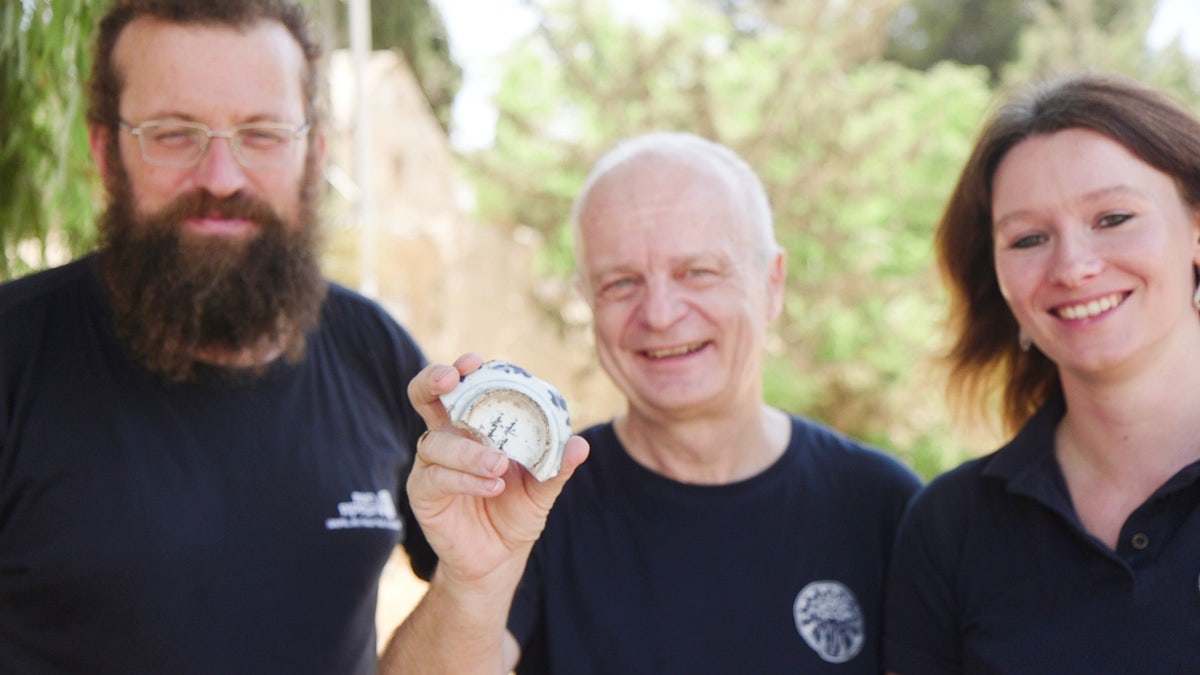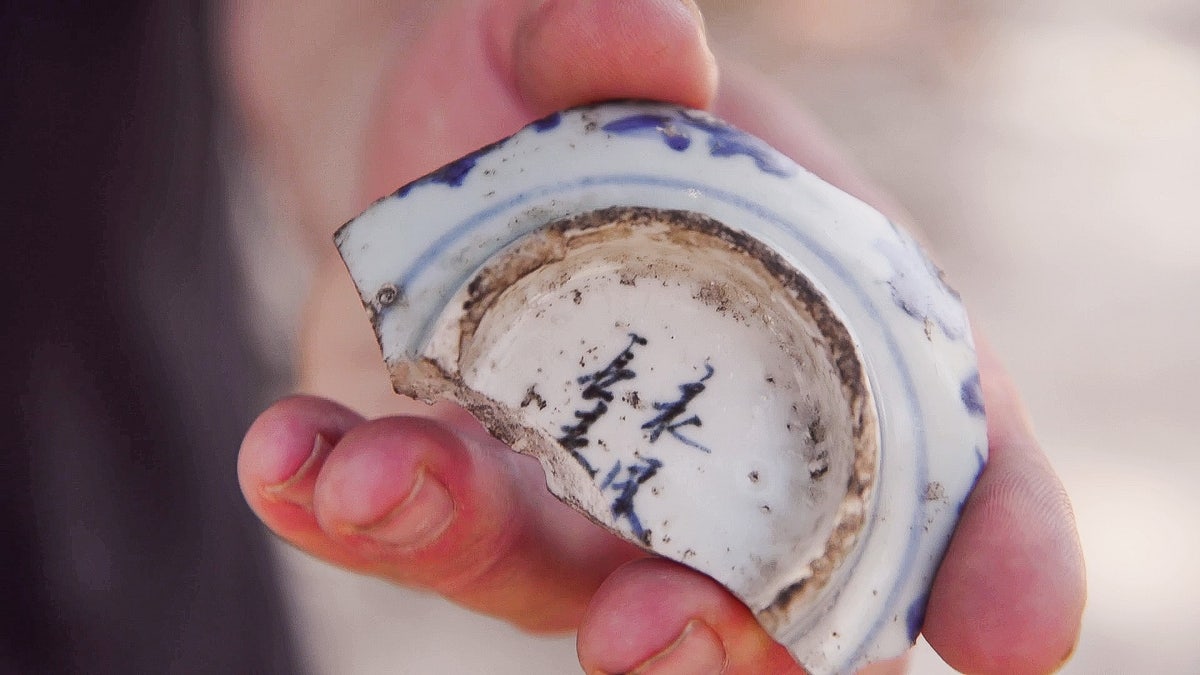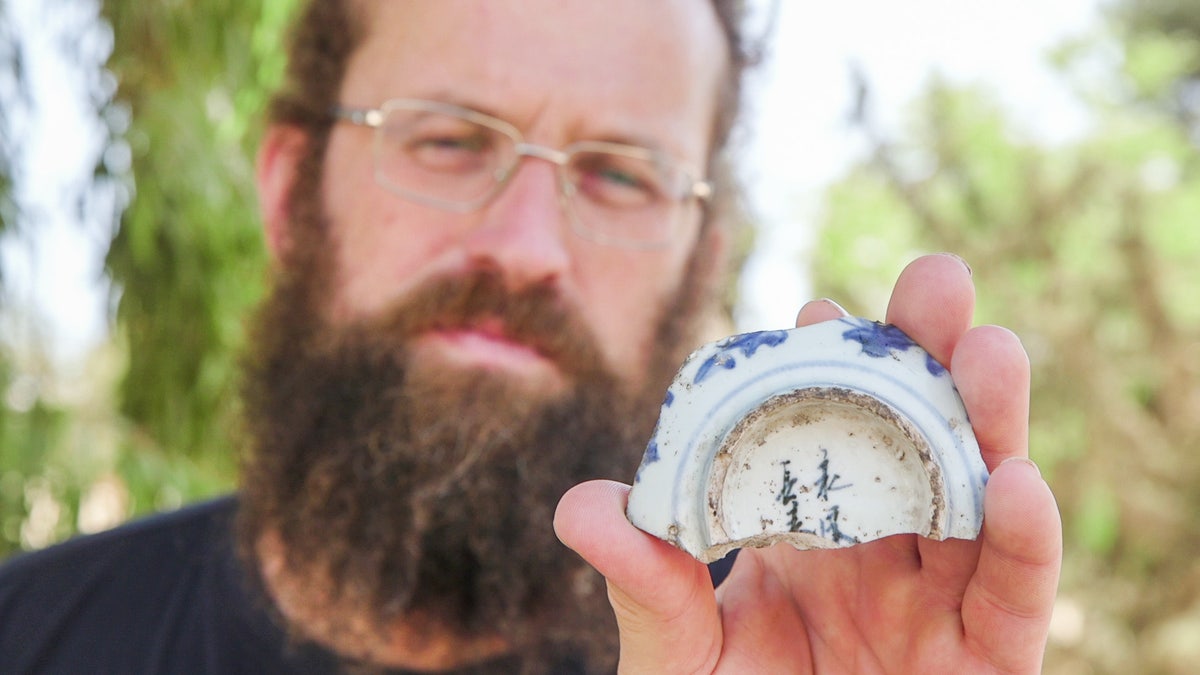The oldest Chinese inscription in Israel found in the holy site of Mount Zion

Archaeologists have recently discovered the oldest known Chinese manuscript at the holy site of Mount Zion, according to the Israel Antiquities Authority (IAA).
The inscription, which was found on a clay bowl, was discovered during a joint excavation between the IAA and the Protestant Institute of Archaeology. The artifact shows “the relationship between the Land of Israel and China,” according to a press release published by the organization this month.
According to the IAA, porcelain began in the 16th century. Its inscription reads, “We will guard forever the eternal spring,” and an excavator was seen coming out of the mud.
“This past summer, during the normal procedures for the upcoming excavation season, Michael Chernin, an archaeologist at the Israel Antiquities Authority, suddenly noticed a colored object coming out of the dirt that had been cleared while the site was being prepared,” the IAA text reads. . “When Michael took the thing out and washed it, he saw that there was a writing on the bottom.”
US-EGYPTIAN ARCHAEOLOGICAL TEAM INVESTIGATES 4,000-YEAR-OLD TOMB NEAR LUXOR FOR EXPERTS, MORE
The oldest Chinese inscription ever found in Israel was recently discovered at the holy site of Mount Zion. (Israel Antiquities Authority via Facebook)
The IAA reported that most of the finds from the excavation date from the Second Temple period to the Byzantine period but the newly discovered pottery had “an unexpected origin.”
The bowl, which was probably produced during the Ming Dynasty between 1520 and 1570, is a symbol of trade relations between Imperial China and the Ottoman Empire. It is the first bowl found in Israel with a Chinese inscription, although other ancient Chinese pottery has been found.
FLORIDA PROFESSOR FINDS EVIDENCE THAT ANCIENT EGYPTIANS DID HALLUCINOGENIC DRUGS

The bowl was probably produced during the Ming Dynasty between 1520 and 1570. (Israel Antiquities Authority via Facebook)
“According to the history of the Ming Dynasty, about 20 official Ottoman envoys visited the imperial court in Beijing during the 15th and 17th centuries,” Facebook read. “Trade relations between these kingdoms are also described in merchant travel books from this period.”
“Thus, the writings of the Chinese scholar Ma Li from 1541 note Chinese merchant colonies in Lebanese coastal cities such as Beirut and Tripoli. This work even mentions other important cities in the region such as Jerusalem, Cairo and Aleppo.”
CLICK HERE TO SUBSCRIBE TO OUR LIFE NEWSLETTER

The artifact shows “the relationship between the State of Israel and China” and was “unveiled in Jerusalem on Mount Zion,” according to the IAA. (Israel Antiquities Authority via Facebook)
According to some Christian traditions, the Last Supper is said to have been held in the Upper Room, or Cenacle, on Mount Zion. In the New Testament, the mountain is also described as symbolizing God’s promises.
The site is also religiously significant to Jews as the Ark of the Covenant was kept on Mount Zion during the reign of King David.
CLICK HERE FOR THE NEWS PROGRAM

Centuries-old Chinese pottery is evidence of trade between Imperial China and the Ottomans. (Israel Antiquities Authority via Facebook)
“In archaeological research, evidence of trade relations between merchants in the Land of Israel and the Far East is known even in earlier times – for example, with various spices,” said IAA Director Eli Escusido in a statement. “But it is interesting to meet the evidence of this relationship and in the form of an original document, written in the Chinese language, and in an unexpected place – on Mount Zion in Jerusalem!”
For more lifestyle articles, visit foxnews.com/lifestyle.
Source link



